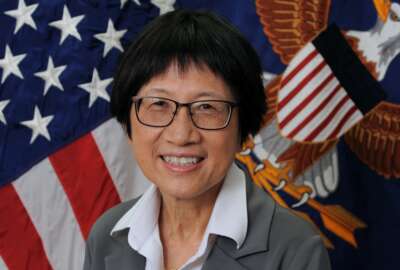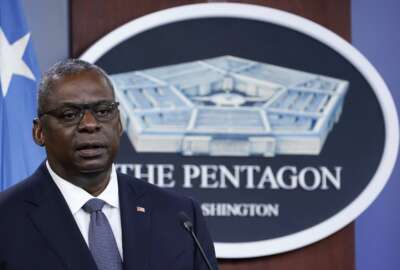DoD confronting ‘Valley of Death,’ other innovation bottlenecks
The Defense Department is evaluating its own processes with an eye toward making it easier for small companies to provide innovative solutions.
The Defense Department is evaluating its own processes with an eye toward making it easier for small companies to provide innovative solutions. Deputy Defense Secretary Kathleen Hicks said the DoD innovation steering group is central to those efforts, which includes mapping out the transition process from prototype or commercially available product to DoD contract.
“I think transition clearly is one of our biggest problems. The so-called ‘Valley of Death,’ scaling up to fielding and full-scale production is a piece of that. There are many places you can fall off the cliff in transition for the Defense Department. So we are mapping that system, which to my knowledge has never been done, which surprises me. So I keep waiting for someone to tell me it has,” Hicks said June 13 during the Defense One Tech Summit. “But right now we have [Research and Engineering, the Chief Digital and Artificial Intelligence Office (CDAO)] and our Acquisition and Sustainment folks sitting down and just building out what is that map? And what are the friction and pain points on that map … where are we falling down in the transitions? And the answer right now, early on, is there are dozens of pain points, spots where we are losing innovation through our system.”
Mapping that system is the first step to understanding how contractors interface with DoD, so the department can start thinking about how to improve that process and any bottlenecks that might exist. But that’s not the only way DoD is attacking the issue.
Hicks said the innovation steering unit also recently developed a DoD “storefront” website for small contractors to begin their interactions with the department. Hicks said that “front door approach” will help the department keep track of all of DoD’s innovation projects across its enterprise, many of which fall under smaller DoD innovation storefronts like SOFWERX, AFWERX and SpaceWERX, while making the department itself more accessible to small businesses.
“If you’re a major contractor with the defense industry, you know how to get to us most likely,” she said. “If you’re a small innovator, you probably don’t. So those little things, like just a webpage that can let you in the door, help.”
One example of the need for that enterprisewide view of innovation is artificial intelligence. That’s why DoD recently brought on Craig Martell, DoD’s first CDAO. AI is a major DoD innovation effort across the department, but it’s happening in various small pockets without a clear path to scale across the enterprise.
Hicks said Martell and his organization will provide a compromise between a federated, enterprise approach to AI, and the ability to model unique solutions and get them to warfighters quickly.
“I have high expectations that CDAO can really be a vanguard for us in terms of demonstrating both that we can create the tech stack we need to get after AI — so that’s the data pieces, the digital awareness, the workforce — and then building up to AI that can enable everything from the boardroom, in terms of efficiencies that we can make on anything from logistics to audit, to making it down to the warfighter in terms of the sensor-to-shooter advantages,” she said.
Hicks also said that the department is taking lessons learned from the original DoD innovation storefront, DIU, and looking at how to multiply those kinds of investments tenfold. For example, DIU taught DoD that many of these innovations that can help support the mission are dual-use commercial technologies. But DIU operates primarily at the prototype level; Hicks also wants to improve focus at the other end of that pipeline, where academia is doing more generalized research on the technologies that inform these prototypes. That way DoD understands the base concepts and can better distinguish the more mature technologies that deliver directly for the warfighter, versus shiny new tech solutions in search of problems.
And that’s because, while most innovation happens in the commercial sector, Hicks said DoD innovation funding is still central to those efforts.
“We have to have better insight into what’s happening in the external world. That’s where I think we have a lot of potential,” she said. “We have the potential to increase partnerships, make sure our workforce has the flexibility to go out into the commercial sector, to spend fellowship time. We can bring more people like Craig Martell into the government, places like Digital Services … where we routinely bring folks in. And of course, the flagship of that actually is [the Defense Advanced Research Projects Agency], where we have long had the ability to attract the best and the brightest into the department. We need to continue doing all of that. And then we need to be able to work with Congress to make sure that we have the room and flexibility to actually bring that technology to bear inside the department.”
Copyright © 2025 Federal News Network. All rights reserved. This website is not intended for users located within the European Economic Area.
Daisy Thornton is Federal News Network’s digital managing editor. In addition to her editing responsibilities, she covers federal management, workforce and technology issues. She is also the commentary editor; email her your letters to the editor and pitches for contributed bylines.
Follow @dthorntonWFED







